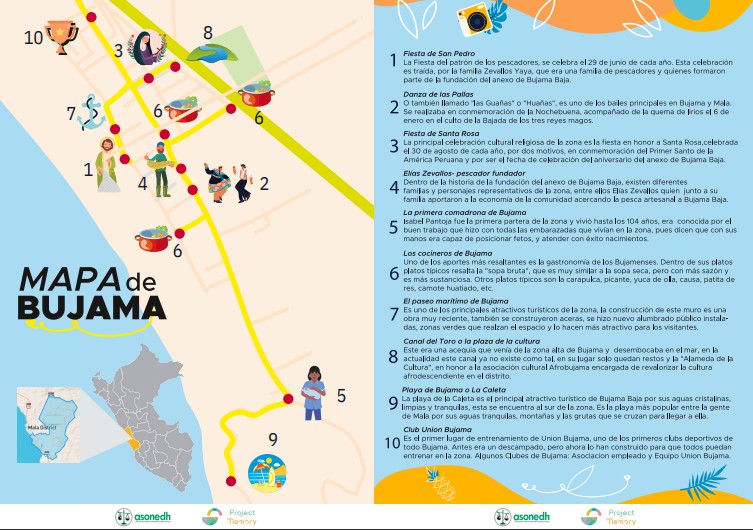1. Description of the community
Bujama, is an ancient region of artisanal fishermen located 90 kilometres south of Lima. Whether by bus or car, the journey takes just over an hour along the Panamericana Sur. Nowadays, the modernity of the seaside resort can be seen in the recent constructions that face the sea and allow the breeze to invade everything around them. It is the ideal place to get a close-up view of the fishing activity and, of course, to taste the excellent stews made with fresh seafood that contribute to the popularity of the local cuisine among visitors. There are two more traditional areas: Bujama Alta, located in the eastern part, near the foothills; and Bujama Baja, settled on the nearby sea sands.
Here, the fishing trade is very old. It is one of the most representative coves of the Peruvian coast. It is known that in the past, the artisanal fishermen used totora reed rafts, as is used in Huanchaco or Pimentel, in the north of the country. The locals remember that a few decades ago you could still see these boats in Bujama, lying on the beach of the Malian coast, from Las Totoras to Bujama; however, artisanal fishing survives with vitality, in boats or fishing with rope.

2. History
A little bit of history. During the viceroyalty the chroniclers mention it as a fishing village, and in the 16th century the area would be registered by the first owner of the estate, a nobleman with the surname Bujama. The presence of the Afro-Peruvian culture is to be noted, which originated with the presence of African immigrants who settled in the lower valleys of Mala (Bujama Baja), San Luis and Chincha. The presence of the Afro- descendants stands out in the traditions, especially in the gastronomy, the customs and in the dance.
The Andean and the Afroperuvian coexist in the dances of Bujama: the pallas and the chunchos, as well as the festejo and the landó. The food deserves a separate point. When arriving at Bujama it is obligatory to serve the main stews of the place: raw soup and carapulcra, ceviche (either of chanque or fish), charquicán and spicy. And to complement their sweet potato, ranfañote, mazamorra cochina and their picarones. Bujama can be visited all year round; but it is in the spring and summer when tourists enjoy its beaches, its natural resources and its friendly people.

3. Economy
Bujama’s economy is based on the service sector, especially commerce. There is also an important presence of agriculture in which fruit trees and olive trees stand out. Apples, grapes and bananas are the characteristic fruits of Bujama. Bujama produces the largest variety of apples and is famous for its fine bananas. Currently, a considerable production of pisco complements the above, as Bujama is located within the area of denomination of origin of this liquor. The remarkable quality of its pisco for export stands out.

4. Culture
4.1 Folk Dances
In every society there will always exist manifestations that express their way of living together and the relationship with their environment in this case in the region as much the dances of chunchos and guañas are expressions that are dated from the beginning of the XX century as much in the valley of Mala as also in the surrounding zones to Bujama like Asia, Coayllo extending until Omas, already this, in the province of Yauyos also by the north it is said that it would arrive to Chilca and probably until Lurín.
Today, it is necessary to admit that they are manifestations in danger of extinction and to counteract this, what should be done as any society that values its cultural identity, to bring
our young people closer, making our descendants identify themselves, feel the pride of saying that these manifestations belong to them and they are really the ones who should take the baton of our cultural inheritance, making it possible for this to last until eternity.
4.2 Las Guañas, Huañas or Pallas
It is one of the main dances not only in Bujama but also in the region. It is performed in commemoration of Christmas Eve, which begins on the eve of Christmas Eve and culminates with the burning of lilies on the 6th of January in the worship of the Descent of the Three Wise Men.
4.3 Los Chunchos
In honour of the Cross of May, the date to be celebrated is actually the 3rd of May according to the Catholic calendar. This is the appropriate date, but for reasons of time, it began to be celebrated on a Saturday-Sunday of the month, and little by little it has been losing its lustre, how can we not remember the pale and serious faces of the masked men who frightened the children and even after the dances they would go out to run around with the children, creating even more terror. This event in Bujama was organised by the Pantoja family who, after the respective religious ceremonies, took the Cross to their chapel which is located almost at the entrance to the tunnel that leads to the port on the so-called “Grano de Oro” hill. This Cross is known as the “Cruz de Grano de Oro”, I must say that in recent years, to my regret, the enthusiasm of those years when these festivities were lived with passion and feared for the almost complete extinction of this cultural manifestation has waned.
4.4 The reed rafts or caballitos de totora and the cala
Nautical boat used in this part of Peru to develop fishing activities, it is made of totora, I dare to say that it is a relative of the northern caballito de totora because of its construction and utility, it is worth mentioning that in Polynesia there are also boats with these characteristics.
4.5 Handicrafts
The baskets, these handicrafts are special for loads that are placed on the donkeys, they were used by the ancient peasants in their work in the fields in the harvest or to transport things from one place to another. It is made in an artisan way, the “chicote” of the banana leaf is used, the “totora” that is the bark of the dried banana trunk that is resistant and serves as a rope to tie things or objects as in this case to work in this object as it is the manufacture of “capachos”.
Mats, as well as totora, which is made from the same plant. The “chicotes” are used in the same way as the “capacho”, the material used is the “chicote” of the banana leaves in parallel lines and the “totora” (this is made from the banana trunk, it is dried and used to weave the mat, In the past, this type of material was used for the roof of the houses, to spread or select grains such as corn, beans or also as mats for the rest of the families.
Toy games, these were only one of the many toys that the youngsters invented to make up for what their parents could not afford and each game had its own season, here we will mention some of the well-known spinning tops; kites; we will add the boliches (in other places they are called marbles); the little rafts made of totora reeds and their nets, a copy of the rafts used to make the Cala (fishing with rafts); the tin boats with their nets; the little cars with rudders made with corks and balls brought from Pesca Perú, some had their little cars, little wooden trucks with their rims made with balls used in fishing nets.
4.6 Culinary Art, Gastronomy
To speak of a specific gastronomy of Bujama would be to tell a half-truth, in the area there is no culinary art that is particular to each of these villages that comprise the northern part of the province of Cañete and even Pucusana. We have a Gastón Acurio who lives in the area but does nothing to revalue the local cuisine, he continues to insist that only the cuisine of Lima is Peruvian cuisine, overshadowing everything that these lands contribute to Peruvian gastronomy.
5. Vocalisation of the word Bujama
It has its origins in the colony having direct links with the institutionalization of the hacienda in Peru, this in relation to the expression BUJAMA, not leaving aside that we belong to the aboriginal ethnic group, true owner of this territory, cultivators of the greenery that the Castilians found on their arrival.
The origin of the word Bujama is little known or unknown to the majority of Bujaminos. How and why was this hacienda called Bujama? This hacienda has its origins in the colony and remains valid until today through the C.A.P. “San Pedro de Mala”. I have been able to collect two similar versions of the expression Bujama, versions that I have collected from an equal number of informants, a Tusan (Peruvian of Chinese descent) who lived in Bujama and the one provided by an elderly Bujamino.
The versions are similar, referring to the birth of the landowner’s wife, the slave who attended the birth tells the woman to push, to make strength for the child to come out.
In the version of the lady, the woman who was in labour called Ana and the slave girl in reference to the childbirth says… “PUJA ANA, PUJA ANA”… In the following version the slave girl changes her expression mentioned before for… “PUJA AMA, PUJA AMA”… In
the first version the word Bujama is transformed PUJA for BUJA or only BU and ANA for JAMA or AMA that together gives us BUJAMA. In the second version, PUJA ANA is changed by PUJA AMA, if one changes PU by BU and joins JA – AMA, one A is removed from the two in a row and we get BUJAMA.
So the word Bujama is the transformation of PUJA ANA or PUJA AMA to BUJAMA being in my opinion the expression PUJA AMA what is closer to the word that today we all know as BUJAMA.
6. Tourism
Bujama is a very popular area for holidaymakers and its chicharrones and tamales are well known. Its beaches are also a spectacular combination. The archaeological site of El Salitre has an excellent view of this beach and – in spite of being a practically abandoned monument – is still an impressive sight. The Peruvian explorer Daniel López M. mentions in his book an area with hidden beaches and a cave near this archaeological site. On one side and between the mouth of the Mala River there is a natural stone arch formed by sea erosion. The mouth of the river is a favoured spot for birdwatching both because of the lagoon formed by the river as it flows into it and because of the surrounding reed beds and grasslands.
In the Salitre there is a hill that is between the mouth of the river and Totoritas where the Incas could see the attack of the enemies, since it comes from the pre-Inca times, there is also a cave that with the passing of the years has been erased and covered with the dust caused by the strong winds, but even with some difficulty you can climb this hill but with great care.

7. Methodology
On Thursday 2 December the team of volunteers arrived in Bujama to proceed with the project of collecting memories of the area.
On Friday 3 December, an event was held with leaders of the community of Bujama to talk about the cultural and historical contribution of the community, the community welcomed and authorized the entry to the community to apply the instruments. In the course of the afternoon, training was provided on the tasks to be carried out by each volunteer.
First, the tasks were specified, such as the collection of the main data of Bujama, it was explained that the collection of memories that the residents consider important and representative of their area, such as characteristic places, outstanding characters, typical dishes, festivities, etc., should be carried out.
Then, they continued with the division of the areas to be covered in Bujama and were also trained on the use of the Memmoryapp application for the interviews.
The next step was the reconnaissance of the area to be covered, for which a complete tour of Bujama was organised and carried out with the group of volunteers gathered to conduct the interviews.
On Saturday morning, 4 December, two of the ten volunteers were again divided into groups, for a total of five groups, in order to generate confidence for the interviews and to cover as much of the district as possible. Tablets were used for this process, which had the Memoryapp application previously installed for the Afro-Peruvian memory census. A pack was also put together and given to all the members of the Bujama community who collaborated with this census. This pack consisted of a folder, information leaflets, stickers, a pencil and a bag, all provided by ASONEDH.
Subsequently, the Afro-Peruvian memories census continued with the support of several members of the community. For this part of the project we went from house to house interviewing the people of Bujama who were available, as well as people who were in shops or around the area.
After the census of Afro-Peruvian memories registered in the Memoryapp, a meeting was held in which each group of volunteers shared the memories they collected during the interviews, in order to continue with the selection of the memories most mentioned by the members of the Bujama community and to be able to detect which are their most representative local memories.

It is worth mentioning that, of the more than 60 memories collected in the application, a ranking of the 10 memories most mentioned and remembered by members of the Bujama community has been drawn up.
Resources for the activity:
- Posters with educational information
- Tablets
- Souvenirs for families
8. Memory Valorisation in bujama
This report presents the strategies and tools used to preserve and revalue the collective memories previously identified through the census of memories with the support of young local volunteers, members of the community of Bujama Baja, interested in developing their social skills and contributing to the valorization and promotion of the collective memory and contributing to the local life of their community.
It is important to mention that through the various tools and strategies shown in this report, it has been possible to reinforce the sense of belonging in the locality, in addition to reinforcing pride in the Afro-Peruvian history and culture immersed in Bujama.
This stage made special emphasis on the promotion of the collective memory through the knowledge that was acquired throughout the execution of Project Memory. Thus, following the model of Local Festivals developed in the Valorization stage of the project, the methodology has been replicated with the objective of developing each memory collected and at the same time strengthening the skills of the youth workers.
This report is designed to achieve the understanding of the memories of the community of Bujama, recognized as one of the Afro-Peruvian communities, which needs a greater dissemination and strengthening of identity through the preservation of its history and culture within the community, and in turn make it visible to the outside with the purpose of contributing to the promotion of collective memories within the community and the generation of local jobs through historical natural tourism.
We believe that this collective memory project developed in Bujama is an opportunity to strengthen the skills of local youth and intergenerational exchange, valuing the memories and history of the community collected firsthand, as well as inspiring young people to explore new routes to get a job, without isolating themselves from the local history of their community.
This is how we seek to ensure social-economic mobility within the area, which in turn coexists amicably with the values, diversities and inherent identity of the area, with the work of young people to generate a new collective solidarity and equitable access to rights and effective justice in everyday life.
1. The census of memories
In order to learn more about the locality of Bujama Baja, a group of young volunteers met and took the time to walk around the area and interact with the locals of the community, with the purpose of collecting memories considered important in the cultural history of Bujama.
In order to achieve this, it was necessary to have the support of a local person to take the team of volunteers to do a reconnaissance of the area and at the same time introduce them to the members of the community so that no one would be uncomfortable and the volunteers could comfortably approach each inhabitant, in addition a division into five teams of two was made for greater ease and scope to collect the memories.
More than forty memories were collected that the neighbors considered important and representative of the Bujama Baja area, such as commemorative places, outstanding characters, typical dishes, festivities, etc. However, ten were the ones that the villagers highlighted as the most significant.
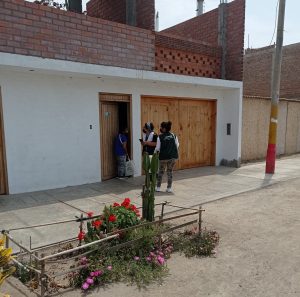
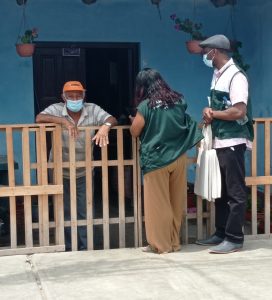
2. AfroBujama Festival
The festival was held on February 5, 2022, in the annex of Bujama Baja, District of Mala, Province of Cañete with the participation of cultural organizations of the annex of Bujama Baja and surroundings, and the participation of 250 people, including children, adolescents, young people and adults, with the aim of making visible and celebrate the cultural contributions of the Afro-Peruvian population also position the annex as a cultural, artistic and tourist attraction that revalues and is proud of its identity and memories.
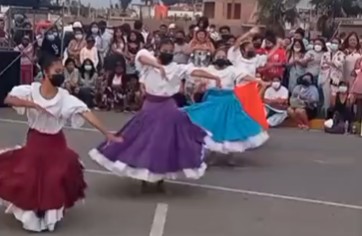
The event also included an entrepreneurial fair with Afro-Peruvian identity, with the aim of valuing and generating local economy in small businesses and enterprises, an information fair on Afro-Peruvian identity that reflects on the collective memory, ancestral memory and identity, an Afro-Peruvian fashion show to position our identity from different aspects and a festival of Afro-Peruvian dances, composed of presentations and competitions, to revalue and show Afro culture with pride.
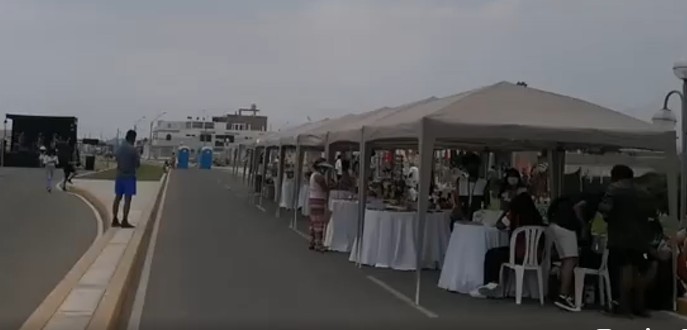
Finally, the coordinating team had the mission of generating delegations, both logistical support, animation, security, prevention of covid 19, where order and safety of the population could be maintained, due to the context of the pandemic and to ensure the proper execution of the event.
3. Bujama Viva – Collective Memory
Bujama Viva – Collective Memory is a photographic exhibition that was held on June 19 as part of the Month of Afro-Peruvian Culture, in the annex of Bujama Baja in the District of Mala, Province of Cañete, with the participation of more than 150 people, both adults and children, with the objective of rescuing part of the local memories of the population, and that each member of the community can value the events and memories of the history of the community of Bujama, allowing the youngest to learn more about their locality, in addition to making visible the artistic, gastronomic, cultural, social, etc. contribution within the population.
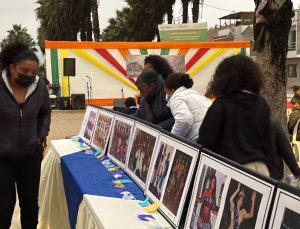
For this activity a previous collection of photographs was made among the members of the community of Bujama Baja, gathering more than 40 images in color and black and white, which allowed to travel through the history of this community, because through each image it was possible to observe different representative characters, such as founders and figures of soccer, as well as festive events from the 60s to more, and figures of Bujama’s daily life.
This event was developed at the same time with artistic and cultural activities to promote the Afro-Peruvian identity, as well as the participation of local enterprises, among others, with the aim of replicating what was learned from the memory project and the dissemination tools.
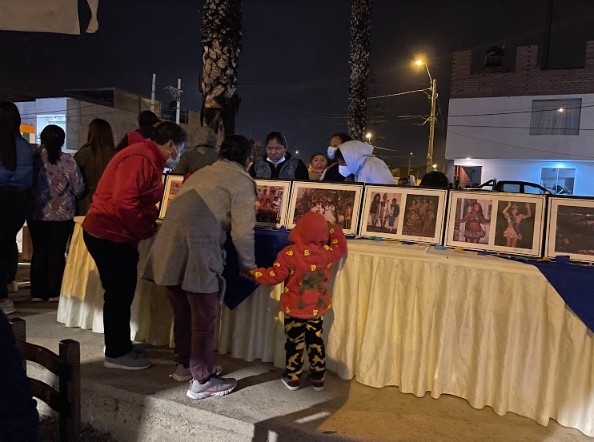
4. Documentary of the Señor de los Milagros
The creation of the documentary was carried out within the framework of the procession of the Señor de los Milagros del Anexo de Bujama, with the objective of rescuing their memories and the historical journey of the image in this community, so interviews were conducted with the faithful and devotees of the brotherhood of the Señor de los Milagros, in order to know their individual and collective stories within the community.
This celebration in honor of the Lord of Miracles, called the Brown Christ, is held during the month of October each year. Typically it is called purple month, in representation of this saint to whom several miracles are attributed since the year 1651 that was painted on a wall of Pachacamilla by a slave of Angolan caste called Pedro Dalcón or Benito.
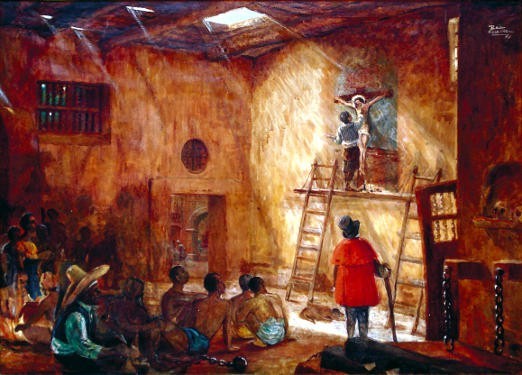
More than 6 people participated in the documentary, giving testimonies of how the procession began, about their faith and the reason for their devotion to the Lord of Miracles, among other relevant topics to understand the devotion and Catholic fervor about the image of the brown Christ.
The documentary of the Señor de los Milagros was published on YouTube and can be watched here.
.
5. Afro Memorias Bujama – Microprograms
With the objective of contributing to the visibility of the memories collected, a series of videos were made for the microprogram entitled “Afro Memorias Bujama”, which were later published on the YouTube platform.
Six members of the Bujama Baja community, who had close experiences with each of the memories recounted in the videos, collaborated in each microprogram. They recounted their memories about outstanding characters in the history of their community, such as the first midwife of Bujama and her important contribution to the health of the mothers of the old Bujama; about sports and cultural organizations, which contribute to the strengthening of the identity of the Afro-Peruvian youth of the community; and religious beliefs, such as the Señor de los Milagros and the history behind his veneration.
This series of microprograms told six important collective memories, about Afro-Peruvian cultural organizations, the Union Sports Club, Afro-Peruvian dances in Bujama, the midwives and the Señor de los Milagros part I and II, as can be seen in the following links:
Afrobujama, Organizaciones culturales afroperuanas
Señor de los Milagros (Cap. 2)
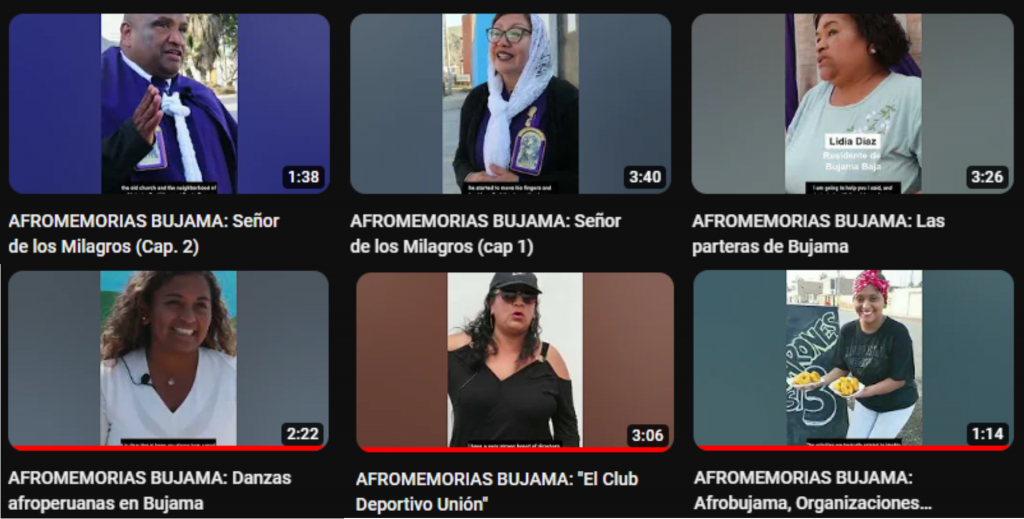
6. Map of memories of Bujama
The town of Bujama Baja has tourist potential, from its beaches and spaces, to its food and culture that are still alive today, in addition to the historical sites located in the area. However, a problem has been recognized, there is no guide to recognize the representative memories of the community of Bujama Baja, so a map was made so that people who come to visit the place can know a little of each space with the help of this tourist map.
Ten points are indicated on the map, these are the most important ones considered by the members of this community. The tourist guide is composed of historical and natural recreation areas, important historical characters in the origin and development of Bujama, places to taste the typical dishes of the area and the various traditional festivities. On the back of the map there are short descriptions of each memory to know not only where to find them, but also the history behind each one of them.
